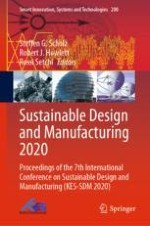2021 | OriginalPaper | Chapter
Energy Utilization Analysis and Optimization of Corrective Insoles Manufactured by 3D Printing
Authors : M. J. Kirby, Rachel Johnson, A. Rees, C. A. Griffiths
Published in: Sustainable Design and Manufacturing 2020
Publisher: Springer Singapore
Activate our intelligent search to find suitable subject content or patents.
Select sections of text to find matching patents with Artificial Intelligence. powered by
Select sections of text to find additional relevant content using AI-assisted search. powered by
